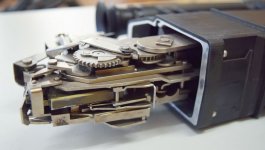I went through a phase of watching a bunch of WW2 tank related videos on YouTube (my grandfather was in recce tanks during the war, including Stuarts and Shermans), and there were a couple historians on there determined to debunk what they saw as the myth of 'superior' German engineering.
I grew up with the accepted narrative that the German tanks were far superior to the Allies, but the Allies won through sheer force of numbers and cheap, voluminous production. These historians disagreed with those assumptions, saying the later German tanks (Tiger, Panther, Tiger II, etc.) may have been superior when they worked, but that they were often designed with overly tight tolerances that failed easily, low durability, and slow, complex maintenance that was a catastrophe in the field. For example, the fabled Panther had overlapping road wheels, which meant replacing one of the inner mounted units required removing three wheels in total.
It's a bit lazy to attribute characteristics to all engineering from a single country, but my impression is many German cars have similar foibles. They're incredible when all the parts are working, but it doesn't take much to make one fail, and when it does, it's often difficult to fix. It's not so much variable quality (that's more of an Italian stereotype), but rather a design focus on complex components and ideal conditions over simplicity, durability or ease of service. Of course, complex parts with tight tolerances are expensive, adding to maintenance costs...




















